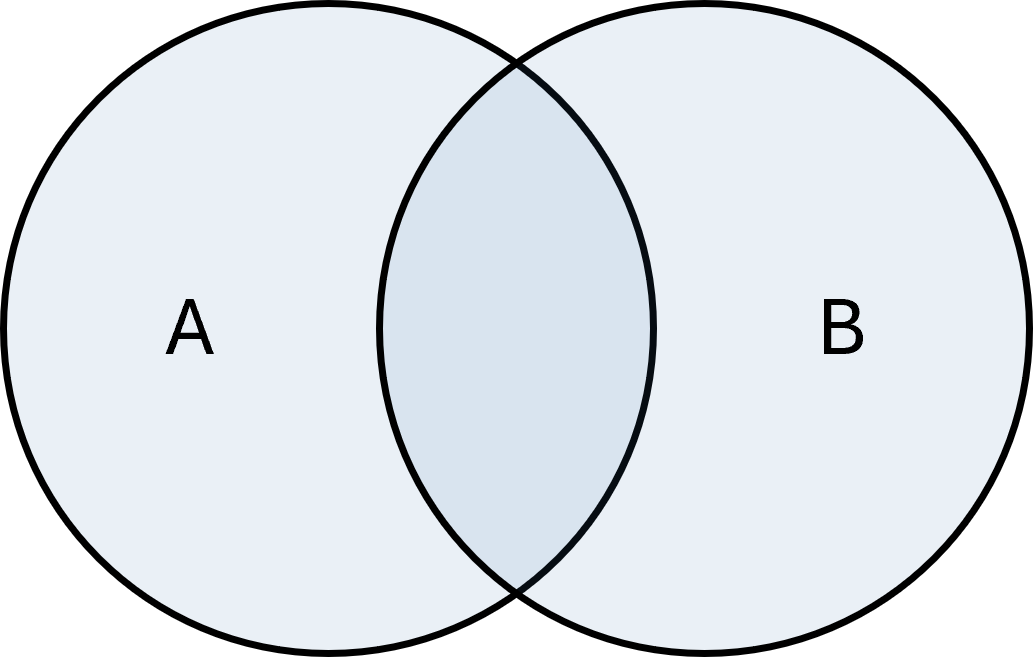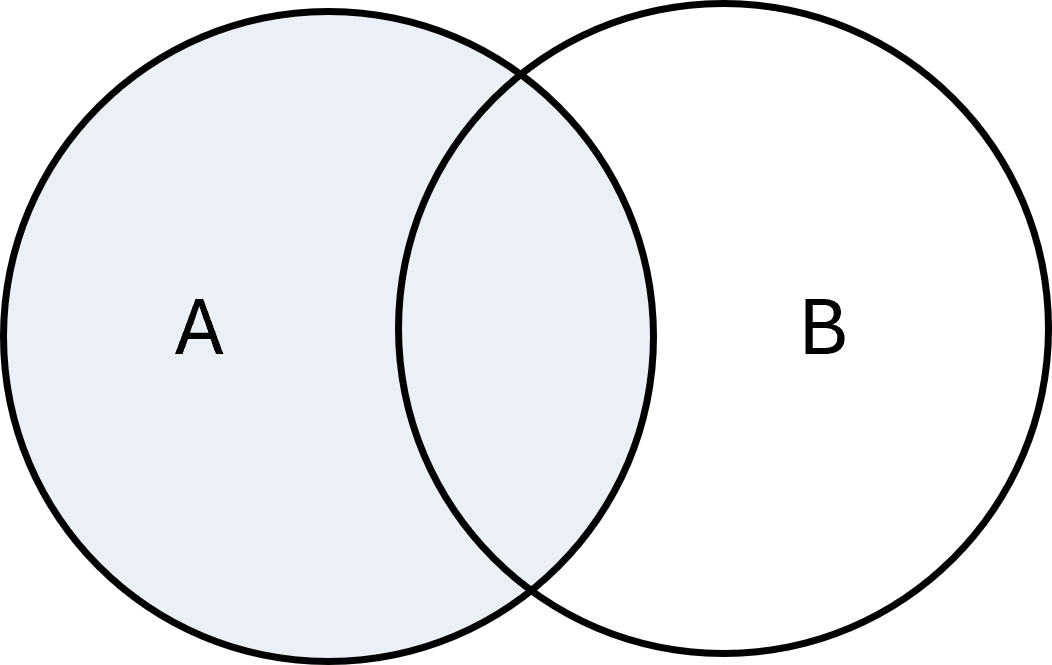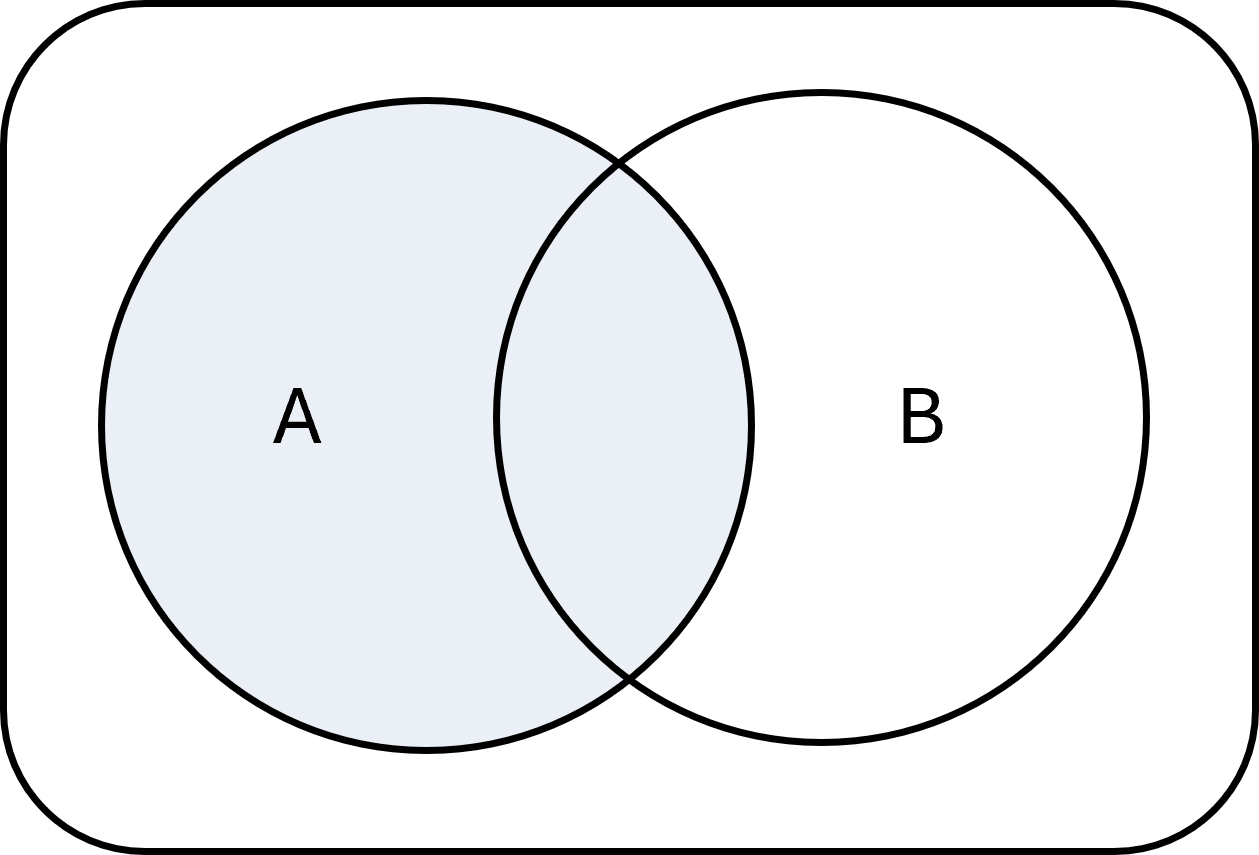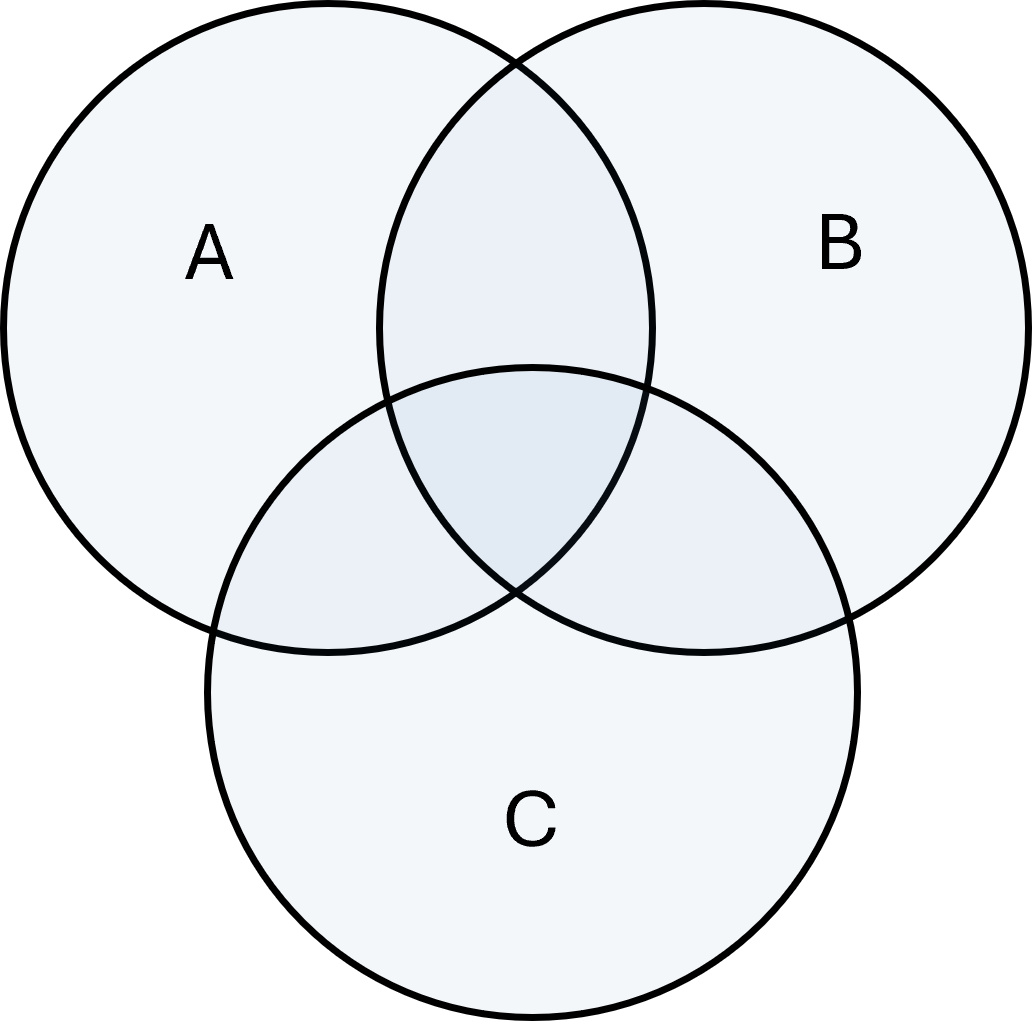Set operations
Set operations are methods to combine or compare sets. Here we look at unions, intersections, disjoint sets, differences, complements, and how these can be visualized with Venn diagrams.
Union
The union of two sets \( \large A\) and \( \large B\) is the set of all elements that are in either \( \large A\) or \( \large B\) (or both). It is written as:
$$ \large A \cup B = \{x \mid x \in A \;\vee\; x \in B\} $$
Example: If \( \large A = \{1,2,3\}\) and \( \large B = \{3,4,5\}\), then \( \large A \cup B = \{1,2,3,4,5\}\).

Intersection
The intersection of two sets is the elements they have in common. It is written as:
$$ \large A \cap B = \{x \mid x \in A \;\wedge\; x \in B\} $$
Example: If \( \large A = \{1,2,3\}\) and \( \large B = \{3,4,5\}\), then \( \large A \cap B = \{3\}\).

Disjoint sets
Two sets are disjoint if they have no elements in common. That is, their intersection is empty:
$$ \large A \cap B = \emptyset $$
Example: \( \large A = \{1,2,3\}, B = \{4,5,6\}\).

Difference
The difference of two sets \( \large A\) and \( \large B\), written as \( \large A - B\) or \( \large A \setminus B\), is the elements that are in \( \large A\) but not in \( \large B\):
$$ \large A - B = \{x \mid x \in A \;\wedge\; x \notin B\} $$
Example: If \( \large A = \{1,2,3\}, B = \{3,4,5\}\), then \( \large A - B = \{1,2\}\).

Complement
If we have a universe \( \large U\) that contains all possible elements, we can define the complement of a set \( \large A\) as all the elements in \( \large U\) that are not in \( \large A\). It is written as:
$$ \large A^{c} = \{x \in U \mid x \notin A\} $$
Example: If \( \large U = \{1,2,3,4,5\}\) and \( \large A = \{1,2\}\), then \( \large A^{c} = \{3,4,5\}\).

Venn diagrams
Venn diagrams are often used to illustrate set operations graphically.
Circles represent sets, and overlapping areas show how union, intersection, difference, and complement work.
